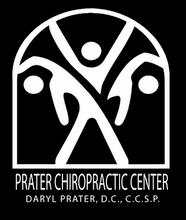
Lactate Threshold Training with a smile (during the summer)
Informal Tuesday Track sessions are underway at the Western Michigan University Read Field house and provide a great venue for getting in those midweek tempo, lactate threshold and VO2 Max Sessions. We are all aware that long runs are a staple of marathon training success. Lactate Threshold training is also a key ingredient and will stimulate the physiological changes to enable you to build stamina, run faster, and feel more comfortable at marathon pace. The more aggressive VO2 Max Workouts are also important towards maximizing potential and are incorporated into the Maximum Velocity Meteor Schedule. You will notice these variations are incorporated into your training schedule on Tuesdays. Lactate Threshold training is accomplished via Tempo (T) runs and Lactate Threshold (LT) or “Cruise” intervals, and VO2 Max via VO2 Max Intervals.
Tempo Runs are steady runs at lactate threshold pace that last 20 minutes or more. You should be able to maintain this pace for up to an hour in a race. In order to maintain a steady rhythm, it is recommended that tempo runs are done in mild weather conditions on flat even terrain; the goal is to maintain an even intensity of effort for a long period of time. Hills, uneven footing and poor weather conditions all interfere. A tempo run should be sandwiched between a good warm up and a cool down. Because they involve running at lactate threshold pace for a longer, concentrated period of time, tempo runs are a better use of training time than lactate threshold runs.
Lactate Threshold or “Cruise” Intervals are repeated runs at lactate threshold pace that last anywhere from 3 – 15 minutes and are broken up by short recovery periods. The brief recovery periods, which usually last about a minute, allow blood lactate levels to remain fairly constant and extend the training session a bit longer than a tempo run. Lactate threshold intervals can be anywhere from 800 meters to 2 miles in length and should also be sandwiched between a warm-up and cool down. The advantage of lactate threshold intervals is that they provide a break from the demands of the longer tempo run while still allowing an opportunity to benefit from a full lactate threshold session. They are easier to do. Like tempo runs, these should be done on a flat, even surface in mild weather conditions.
VO2 Max (VO2) workouts increase the amount of blood your heart can pump to your muscles by increasing stroke volume and increase the amount of oxygen your muscles can extract from the blood. This is important because it determines your aerobic capacity. The higher you raise your VO2 max, the greater your ability to produce energy aerobically. The more energy you can produce aerobically, the faster pace you can maintain.
Your VO2 max is the maximum amount of oxygen that you can take in, process and use to provide the energy you need to run. The upper limit of your VO2 max (also known as aerobic capacity) is in large part genetically predetermined. However, most runners have not “maxed” out their functional aerobic capacities and well-designed training can have a significant impact on improving your VO2 max.
How do VO2 Max workouts differ from lactate threshold workouts? VO2 Max intervals are shorter…and faster than lactate threshold intervals. They are medium length intervals of 600 – 2000 meters at current 3k - 5k race pace. The recovery period between intervals is also longer. In between each VO2 max interval jog 50 – 90 % of the time it takes to run the repeat. These workouts will increase your aerobic capacity to its upper functional limit. Anywhere from 2 ½ to 5 miles worth of intervals should be part of every VO2 max session (for example 5 x 800 meters) At this running speed, your heart rate will generally be at 95 – 100% of maximum. VO2 Max workouts are more demanding on the body than lactate threshold workouts and usually require an additional day or two of recovery above and beyond what is required by lactate threshold workouts.
How fast should you run your Tempo, Lactate Threshold and VO2 Max runs? You can obtain a personalized report using Greg McMillan’s running calculator. All you need is a recent race time, and the tool will automatically make the calculations. It provides not only Tempo (T), Lactate Threshold (LT) (Cruise Interval), and VO2 Max (VO2) training paces, but also your Easy Long Run (E), Recovery Run and Race Time Predictions for all the most commonly raced distances. To use the Greg McMillan Running Calculator simply input a recent time for any “best effort” race distance and it will provide a personal calculation of your training paces as well as predicted race times.
If you need to reference the VDOT chart or a number of other great training articles, check out the Kalamazoo Area Runners website Training Articles Page.
Reference: Pfitzinger, P., and S. Douglas. 1999. Road Racing for Serious Runners. Champaign, IL: Human Kinetics.









